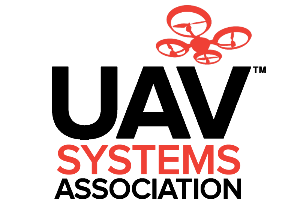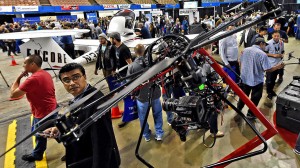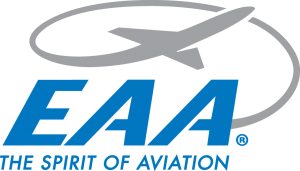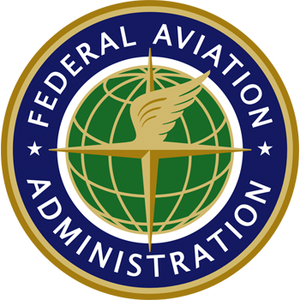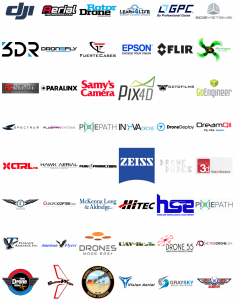by Keith Kaplan
The past few months of this year have brought on some significant changes to the progress we wished to see in moving forward the evolution of commercial drone operations in America. These changes are encouraging, but they are just a start! It is important that the commercial drone community continue to be active and engaged with this process to assure the safe and ethical integration of aerial robotics in America.
I know it is hard to believe but the UAVSA has grown solely by word of mouth and by it’s partnerships with incredible speed and we are grateful for your support and your membership. We have decided to officially launch globally, and are going to accomplish this through a public outreach program to increase positive awareness about drones, the membership and influence the UAVSA, and the ability of the commercial drone community to contribute to the betterment of all mankind.
With this announcement we are also launching the first program to assist our members with an FAA issued 333 Exemption to fly drones commercially and legally in the National Air Space of the United State of America. The UAVSA “Fast Track to 333 Exemption” is the first program of its kind and we encourage you go to uavsa.org/333 for more information and to apply.
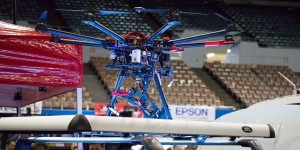
The UAVSA is very excited for this December’s 2nd Annual International Drone Expo, IDE 2015, which is going to be at the LA Convention Center December 11-12. We are already gearing up with Aerial Media Pros, DJI, DroneFly, Flir, Samy’s Camera, DreamQii, and many more important members of our community. We have 65,000 sq. ft. of Expo space open to the public, and an additional 10,000 sq. ft. for the pro conference. If you where at the last Expo you know just how incredible and fun it was and we are looking forward to seeing you this year! Please go to the official website for more information and updates at intdroneexpo.com
Its not often that we see the pilots of manned and unmanned aircraft team up but we are happy to announce that the UAVSA and the EAA (Experimental Aircraft Association) have officially teamed up and are committed to ushering in the future of aerospace. The EAA holds one of the largest air shows in the world, the EAA AirVenture Oshkosh 2015, and the UAVSA will be participating as an official partner and exhibitor.
Our partnership with the EAA is with the understanding that aviation and aerospace are evolving and there are many pilots that currently are eligible to obtain their FAA 333 Exemption and fly drones commercially and legally. The UAVSA is committed to training and assisting licensed pilots that wish to receive their 333 Exemption that could be placed in the employment of companies that need drone pilots, or wish to start their own business in the “New Drone Economy”. Please go to uavsa.org/333 for more information and to apply.
The FAA issued its Small UAS Notice of Proposed Rulemaking (NPRM) on February 15th. We feel there are items in the NPRM that are far behind the technology available for the safe and ethical operation of commercial drones and we are confident at the UAVSA that the commenting period (ending April 24th) of stakeholders required by law will vet many of these misunderstandings, and that there will be a number of NPRM periods issued by the FAA before the final rules are issued.
Here is a summary of the NPRM:
Operational Limitations:
Unmanned aircraft must weigh less than 55 lbs. (25 kg).
Visual line-of-sight (VLOS) only; the unmanned aircraft must remain within VLOS of the operator or visual observer.
At all times the small unmanned aircraft must remain close enough to the operator for the operator to be capable of seeing the aircraft with vision unaided by any device other than corrective lenses.
Small-unmanned aircraft may not operate over any persons not directly involved in the operation.
Daylight-only operations (official sunrise to official sunset, local time).
Must yield right-of-way to other aircraft, manned or unmanned.
May use visual observer (VO) but not required.
First-person view camera cannot satisfy “see-and-avoid” requirement but can be used as long as requirement is satisfied in other ways.
Maximum airspeed of 100 mph (87 knots).
Maximum altitude of 500 feet above ground level.
Minimum weather visibility of 3 miles from control station.
No operations are allowed in Class A (18,000 feet & above) airspace.
Operations in Class B, C, D and E airspace are allowed with the required ATC permission.
Operations in Class G airspace are allowed without ATC permission
No person may act as an operator or VO for more than one unmanned aircraft operation at one time.
No careless or reckless operations.
Requires preflight inspection by the operator.
A person may not operate a small-unmanned aircraft if he or she knows or has reason to know of any physical or mental condition that would interfere with the safe operation of a small UAS.
Proposes a microUAS option that would allow operations in Class G airspace, over people not involved in the operation, provided the operator certifies he or she has the requisite aeronautical knowledge to perform the operation.
Certification and Responsibilities
Pilots of a small UAS would be considered “operators”. Operator
Operators would be required to: Pass an initial aeronautical knowledge test at an FAA-approved knowledge-testing center.
Be vetted by the Transportation Security Administration.
Obtain an unmanned aircraft operator certificate with a small UAS rating (like existing pilot airman certificates, never expires).
Pass a recurrent aeronautical knowledge test every 24 months.
Be at least 17 years old.
Make available to the FAA, upon request, the small UAS for inspection or testing, and any associated documents/records required to be kept under the proposed rule.
Report an accident to the FAA within 10 days of any operation that results in injury or property damage.
Conduct a preflight inspection, to include specific aircraft and control station systems checks, to ensure the small UAS is safe for operation.
Aircraft Requirements
FAA airworthiness certification not required. However, operator must maintain a small UAS in condition for safe operation and prior to flight must inspect the UAS to ensure that it is in a condition for safe operation. Aircraft Registration required (same requirements that apply to all other aircraft).
Aircraft markings required (same requirements that apply to all other aircraft). If aircraft is too small to display markings in standard size, then the aircraft simply needs to display markings in the largest practicable manner.
Proposed rule would not apply to model aircraft that satisfy all of the
Model Aircraft criteria specified in Section 336 of Public Law 112-95.
The proposed rule would codify the FAA’s enforcement authority in part 101 by prohibiting model aircraft operators from endangering the safety of the NAS.
Additionally on March 23rd the FAA issued an update to streamline the Certificate of Authorization (COA) for previously granted 333 Exemption holders for sUAS operations’ below 200ft. see the official comments below from the FAA website:
“The Federal Aviation Administration has established an interim policy to speed up airspace authorizations for certain commercial unmanned aircraft (UAS) operators who obtain Section 333 exemptions. The new policy helps bridge the gap between the past process, which evaluated every UAS operation individually, and future operations after we publish a final version of the proposed small UAS rule.
Under the new policy, the FAA will grant a Certificate of Waiver or Authorization (COA) for flights at or below 200 feet to any UAS operator with a Section 333 exemption for aircraft that weigh less than 55 pounds, operate during daytime Visual Flight Rules (VFR) conditions, operate within visual line of sight (VLOS) of the pilots, and stay certain distances away from airports or heliports:
5 nautical miles (NM) from an airport having an operational control tower; or
3 NM from an airport with a published instrument flight procedure, but not an operational tower; or
2 NM from an airport without a published instrument flight procedure or an operational tower; or
2 NM from a heliport with a published instrument flight procedure
The “blanket” 200-foot COA allows flights anywhere in the country except restricted airspace and other areas, such as major cities, where the FAA prohibits UAS operations. Previously, an operator had to apply for and receive a COA for a particular block of airspace, a process that can take 60 days. The agency expects the new policy will allow companies and individuals who want to use UAS within these limitations to start flying much more quickly than before.
Section 333 exemption holders will automatically receive a “blanket” 200 foot COA. For new exemption holders, the FAA will issue a COA at the time the exemption is approved. Anyone who wants to fly outside the blanket parameters must obtain a separate COA specific to the airspace required for that operation.”
It is important to remember he FAA is responsible for the safety of all air traffic and sets the standards for such globally. There are millions of flights everyday, and many of us travel by air frequently and safely all around the world, and all of this is because of the FAA. We must as a united commercial drone community encourage the matriculation of information and advancements in technology to assist the FAA in making informed and important choices while creating the laws for the integration of sUAS (Drones) into the NAS (National Air Space). This is of great importance because history has proven that the United States FAA and its regulations on air traffic control become globally adopted standards of operation.
It is truly amazing to see all the wonderful events and conferences that have been created for this year and for our community, “Drone Fever” is upon us and the Tesla Foundation and the UAVSA are here to server our community in the best way we can. We look forward to hearing from you and please contact us anytime at uavsa.org. Until then, fly safe!


